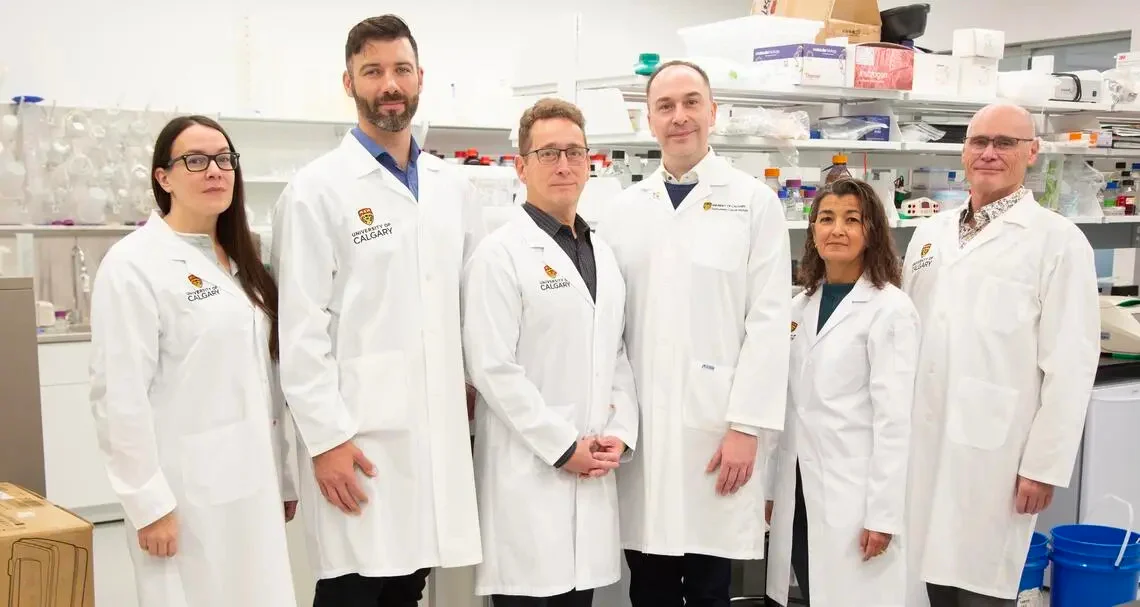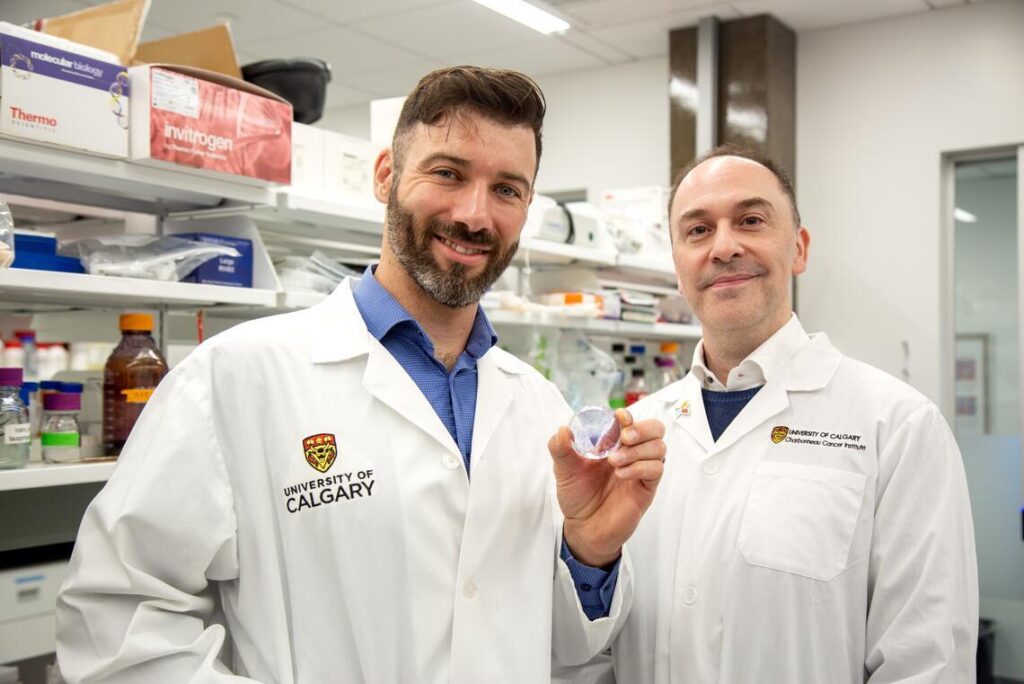Summary of Key Points
- We are recruiting 10,000 Canadians to test their homes for radon and submit toenail samples as they hold long-term information about our exposure to radioactive toxicants in our environment such as radon gas.
- Current rules governing lung cancer screening programs can’t yet include radon exposure as one of the risk criteria. The reason being few people can reliably report their radon exposure across decades like they can report the number of years they’ve smoked tobacco.
- Two in five people who develop lung cancer in Canada today do not meet current screening inclusion criteria, with half of those never having smoked tobacco at all, and another half smoking too little, or too long ago, for tobacco alone to be considered causative.
10,000 Canadians Needed for Groundbreaking Study
The Evict Radon National Study team is recruiting 10,000 Canadians to test their homes for radon and submit toenail samples. Toenails may seem like an unlikely research tool, but they hold long-term information about our exposure to radioactive toxicants in the environment, including radon gas, a naturally occurring, invisible, odourless, and radioactive gas that is the second leading cause of lung cancer after smoking tobacco.
Currently, lung cancer screening programs can’t include radon exposure as a risk factor because few people can accurately report their exposure across decades. Unlike tobacco use, there’s no straightforward way to measure how much radon a person has encountered over their lifetime.
Two in five Canadians diagnosed with lung cancer today don’t meet current screening criteria. Half of those people have never smoked, while the other half smoked too little or too long ago for tobacco to be considered the primary cause. Now, researchers believe a simple toenail clipping could help fill that gap and potentially change how we assess lung cancer risk in the future.
When Lung Cancer Strikes Without Warning
At 47 years of age, Emi Bossio was feeling good about where she was at. She had a successful law practice, two growing children and good health. Then she developed a nagging cough and the diagnosis to come would take her breath away.
“I never smoked, never. I ate nutritiously and stayed fit. I thought to myself, I can’t have lung cancer,” says Bossio. “It was super shocking. A cataclysmic moment. There are no words to describe it.”
Bossio had to give up her law practice to focus on treatment and healing. As part of that journey, she’s taken on a new role as an advocate to increase awareness about lung cancer. She still has no idea what caused her lung cancer. The same goes for Tim Monds, a non-smoker who in 2016, at the age of 57, was diagnosed with stage one non-small cell lung cancer (NSCLC). Within two years, the cancer progressed to stage four.
“Lung cancer patients, like me, are living longer. That’s great, but we need to identify cancer risk sooner. We know early detection and screening programs are effective in lowering mortality rates,” says Monds.
Trying to answer that question is how Bossio and Monds became interested in the research Dr. Aaron Goodarzi, Scientific Director of the Evict Radon National Study, is doing. Dr. Goodarzi leads an interdisciplinary team looking at environmental causes of lung cancer, like radon.
Toenails Contain a Living History of Exposure
Dr. Goodarzi and his team may have found a way to make long-term radon exposure measurable. The new study aims to provide critical data to estimate a person’s lung cancer risk based on radon exposure, and to do that, we need Canadians’ toenail clippings.
“We’ve learned that our toenails hold long-term information about our exposure to radioactive toxicants in our environment such as radon gas. They are one of our body’s archives of past exposure,” says Dr. Goodarzi. “After you inhale radon, it quite quickly transforms into a specific type of radioactive lead. Your body treats radioactive lead from radon like it does all lead and stores it in slow-shedding tissues such as the skin, hair and nails.”
A proof-of-concept study, published in Environment International by Dr. Goodarzi and co-principal investigator Dr. Michael Wieser, demonstrated that measuring radioactive lead in toenails is a promising way to estimate a person’s long-term radon exposure.
“We believe we’ve discovered a reliable, quantitative way to measure long-term radon exposure at an individual level,” says Dr. Wieser. “We used a combination of personalized radiation dose epidemiology and isotope dilution mass spectrometry to evaluate ultrasensitive measurements of the radon decay product. We tested for lead isotopes in toenail cuttings and proved they can serve as a quantitative method to reveal lifetime radon exposure at an individual level.”
The pilot project, funded by the Canadian Cancer Society, recruited participants from the Evict Radon National Study. With new funding, a much larger validation trial is now underway to recruit up to 10,000 people from across Canada.

Inside the Specialized Lab
The toenails are analyzed in a specially designed, metal-free lab within the Environmental Cancer Research Hub at the Arnie Charbonneau Cancer Institute, University of Calgary. The counters and shelves are all made of plastic, and the walls have a unique coating to prevent contamination. Researchers wear plastic shoes and lab coats, and strict protocols are in place for what materials can enter the space.
The process begins by separating the lead isotopes from other atoms in the sample using a high-powered microwave and ion chromatography techniques. The samples are then measured with a multi-collector mass spectrometer, a highly sensitive instrument capable of counting individual atoms of a specific isotope.
“It was a challenging task to develop the methodology to measure an ultratrace amount (femtogram quantities) of the isotope,” says Dr. Kerri Miller. “In this case we were measuring 210Pb. For these samples we were battling both detection limits and spectral interferences on the preparation and instrumentation side of things. But we found a way to do it reliably and now we can use this technology to improve the way we assess personalized radon exposure.”
Researchers say toenail clippings are a useful tissue for analysis because they are, at least compared to fingernails or hair, more protected from a lot of the chemical contaminants that people routinely come into contact with. Chemicals such as dyes, manicure products, cleaning products, and household or occupational chemicals may complicate the analysis. Along with the toenail clippings, researchers also collected lifestyle data from the participants; things like the amount of time someone spends in their home, at work, in another person’s residence, or in a vehicle or outside.
“In greater or lesser amounts, radon is everywhere – in all the buildings in which we live, work and play, and we see this in our data,” says Dr. Dustin Pearson. “The amount of time spent at home, at work, at another’s residence or outside turned out to be essential in understanding our data as it defines a person’s dose of radiation from radon. With this information, we were able to decipher what our toenails were saying about our radon history and develop, for the first time, a reliable lifetime radon measurement that looked back in time, as well as across environments.”
The data, together with the results from radon home tests, created one of the most holistic radon exposure studies yet, working back from human behaviour and how that altered the atomic markers of exposure.
A Step Toward Personalized Prevention
This research could transform how we assess and prevent lung cancer by finally allowing scientists to account for lifetime radon exposure in risk assessment. By analyzing something as simple as a toenail clipping, researchers hope to make screening more inclusive and personalized.
For Canadians like Emi Bossio and Tim Monds who never smoked yet developed lung cancer, this research potentially offers something powerful: answers.
Toenail Study Eligibility Survey